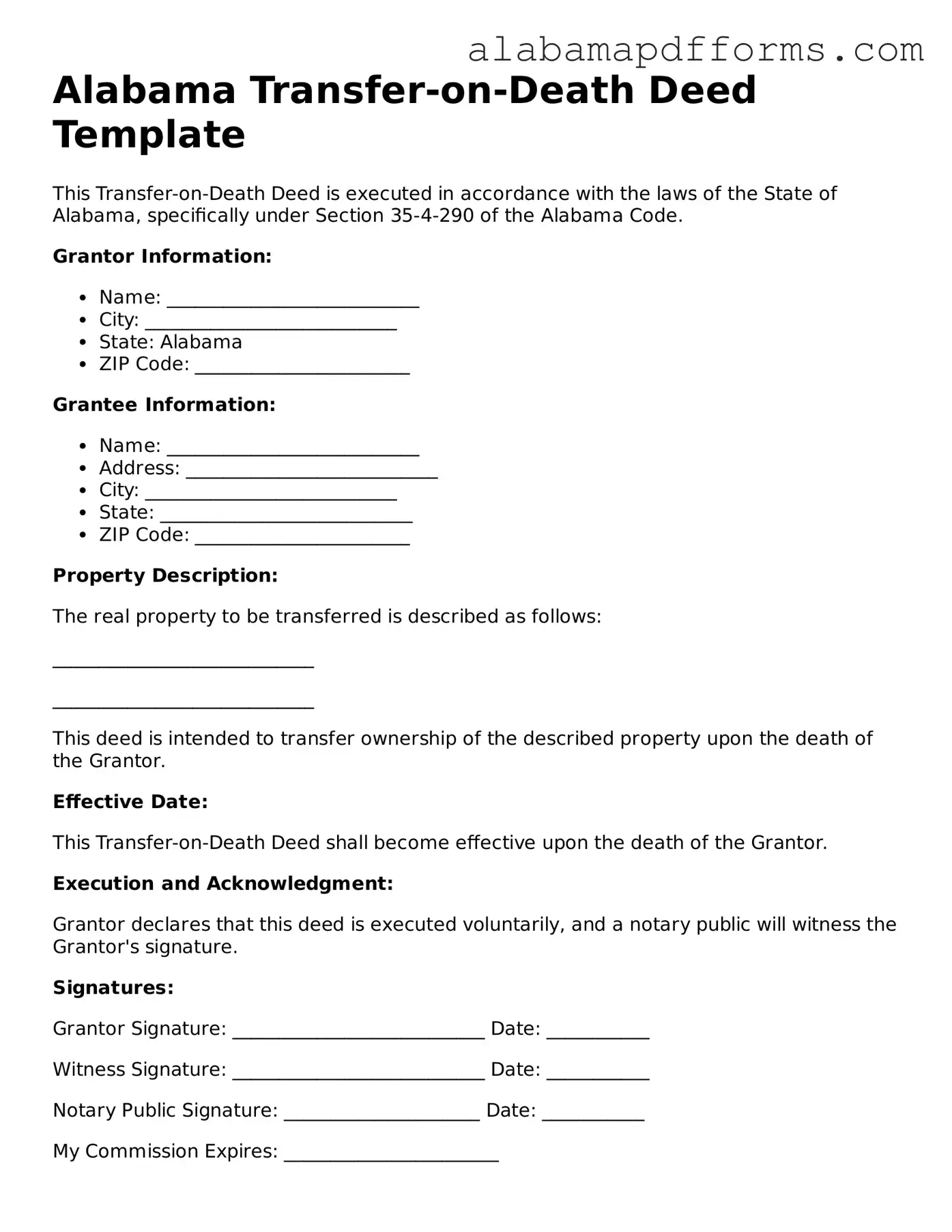Alabama Transfer-on-Death Deed Template
This Transfer-on-Death Deed is executed in accordance with the laws of the State of Alabama, specifically under Section 35-4-290 of the Alabama Code.
Grantor Information:
- Name: ___________________________
- City: ___________________________
- State: Alabama
- ZIP Code: _______________________
Grantee Information:
- Name: ___________________________
- Address: ___________________________
- City: ___________________________
- State: ___________________________
- ZIP Code: _______________________
Property Description:
The real property to be transferred is described as follows:
____________________________
____________________________
This deed is intended to transfer ownership of the described property upon the death of the Grantor.
Effective Date:
This Transfer-on-Death Deed shall become effective upon the death of the Grantor.
Execution and Acknowledgment:
Grantor declares that this deed is executed voluntarily, and a notary public will witness the Grantor's signature.
Signatures:
Grantor Signature: ___________________________ Date: ___________
Witness Signature: ___________________________ Date: ___________
Notary Public Signature: _____________________ Date: ___________
My Commission Expires: _______________________
Note: It is advisable to consult with a legal professional before executing this deed to ensure compliance with state-specific requirements.
